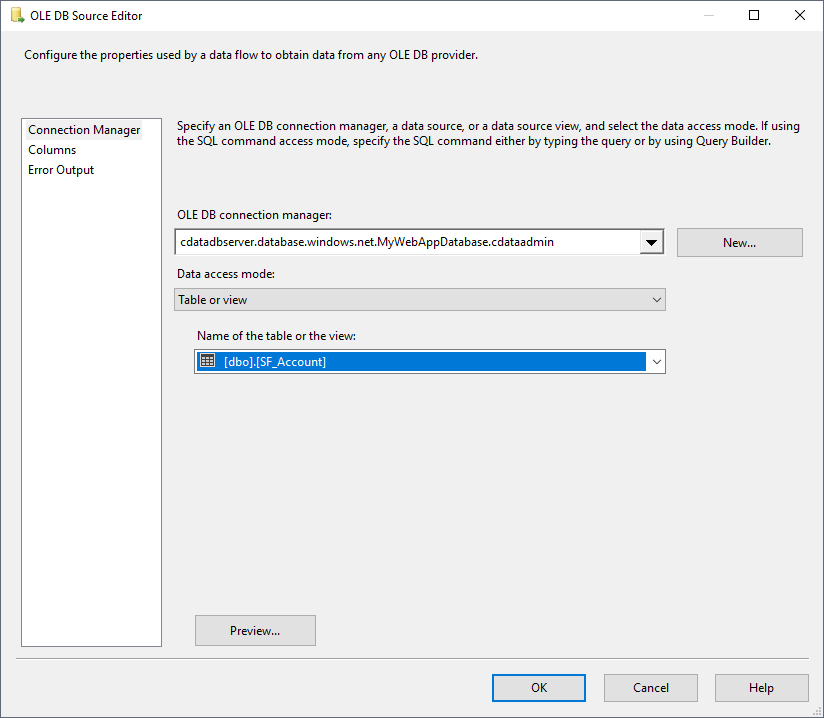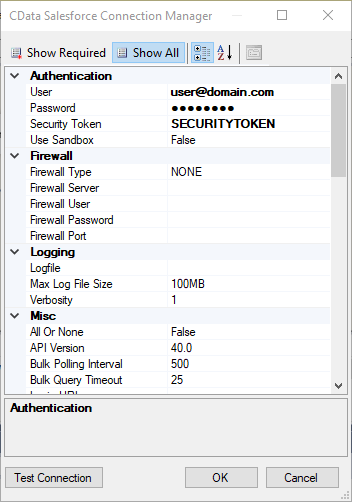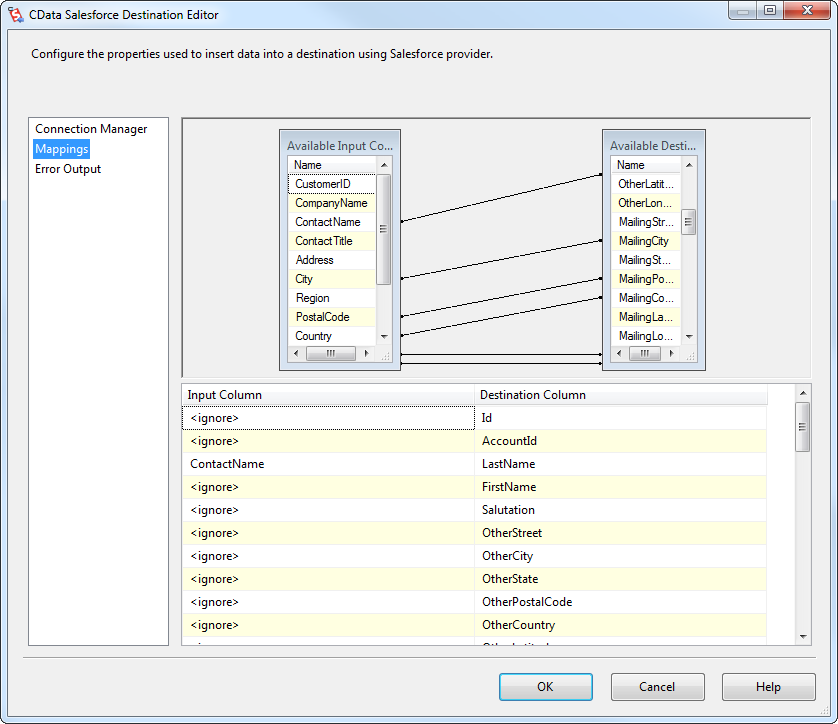Discover how a bimodal integration strategy can address the major data management challenges facing your organization today.
Get the Report →Export Data from SQL Server to Oracle through SSIS
Easily push SQL Server data to Oracle using the CData SSIS Tasks for Oracle.
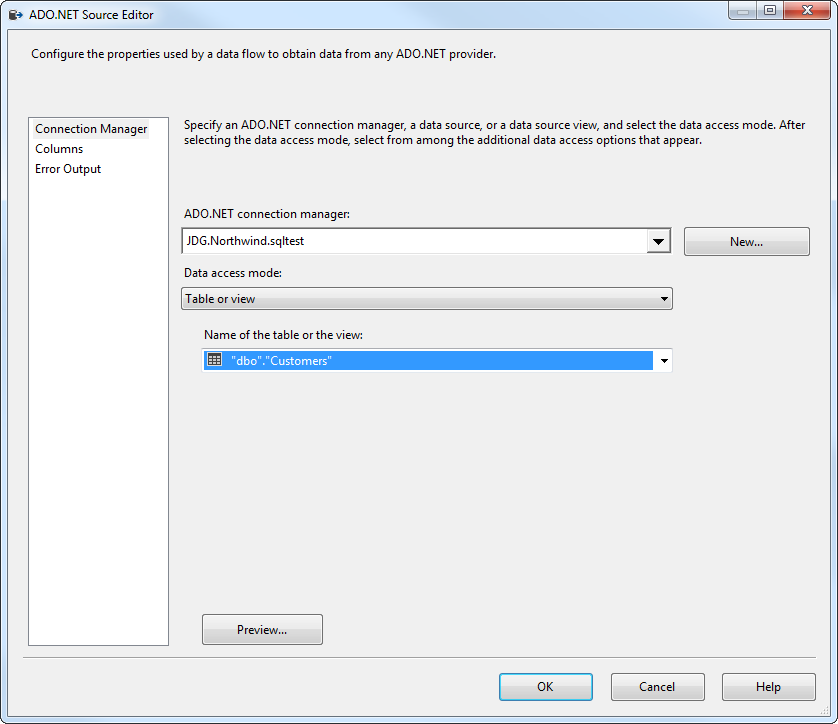
SQL Server databases are commonly used to store enterprise records. It is often necessary to move this data to other locations. The CData SSIS Task for Oracle allows you to easily transfer Oracle data. In this article you will export data from SQL Server to Oracle.
Add Source and Destination Components
To get started, add a new ADO.NET Source control and a new Oracle Destination control to the data flow task.
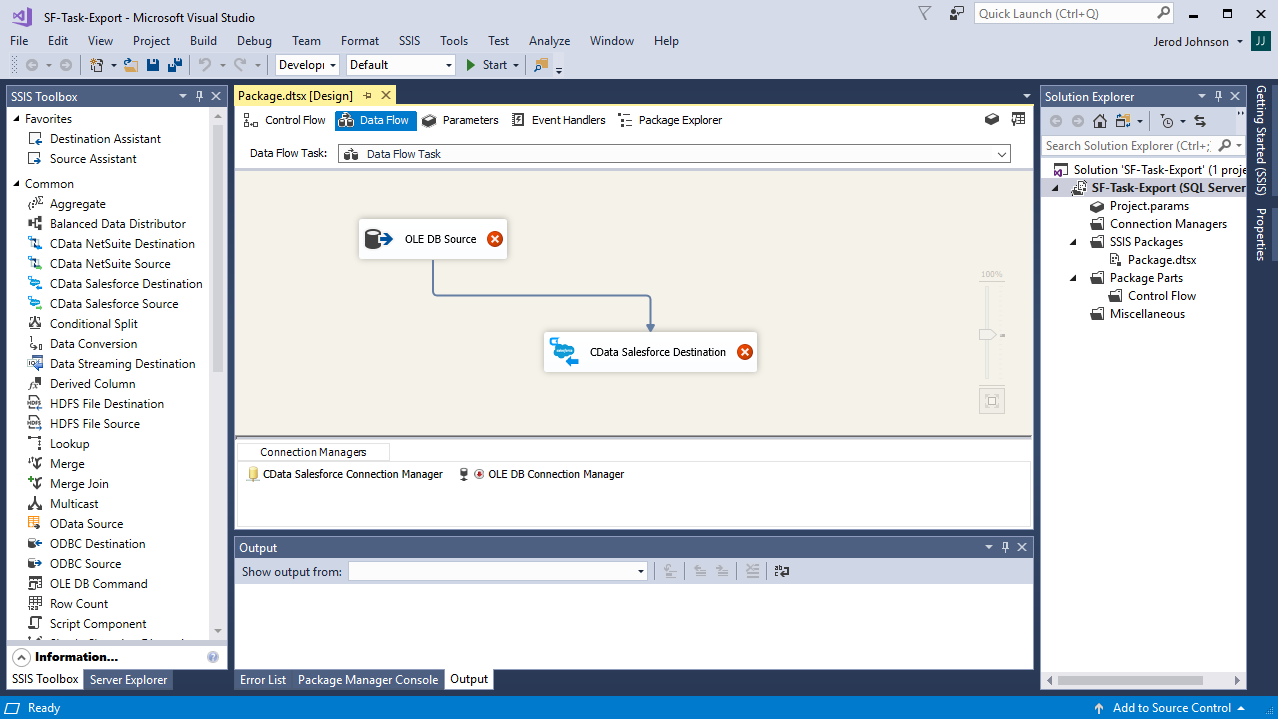
Configure the ADO.NET Source
Follow the steps below to specify properties required to connect to the SQL Server instance.
- Open the ADO.NET Source and add a new connection. Enter your server and database information here.
- In the Data access mode menu, select "Table or view" and select the table or view to export into Oracle.
- Close the ADO NET Source wizard and connect it to the destination component.

Create a New Connection Manager for Oracle
Follow the steps below to set required connection properties in the Connection Manager.
- Create a new connection manager: In the Connection Manager window, right-click and then click New Connection. The Add SSIS Connection Manager dialog is displayed.
- Select CData OracleOCI Connection Manager in the menu.
-
Configure the connection properties.
To connect to Oracle, you'll first need to update your PATH variable and ensure it contains a folder location that includes the native DLLs. The native DLLs can be found in the lib folder inside the installation directory. Once you've done this, set the following to connect:
- Port: The port used to connect to the server hosting the Oracle database.
- User: The user Id provided for authentication with the Oracle database.
- Password: The password provided for authentication with the Oracle database.
- Service Name: The service name of the Oracle database.
Configure the Oracle Destination
In the destination component Connection Manager, define mappings from the SQL Server source table into the Oracle destination table and the action you want to perform on the Oracle data. In this article, you will insert Customers entities to Oracle.
- Double-click the Oracle destination to open the destination component editor.
- In the Connection Managers tab, select the connection manager previously created.
-
In the Use a Table, menu, select Customers.
In the Action menu, select Insert.
![The destination table and action to be performed.]()
-
On the Column Mappings tab, configure the mappings from the input columns to the destination columns.
![The mappings from the SQL Server source to the SSIS destination component.]()
Run the Project
You can now run the project. After the SSIS Task has finished executing, data from your SQL table will be exported to the chosen table.
